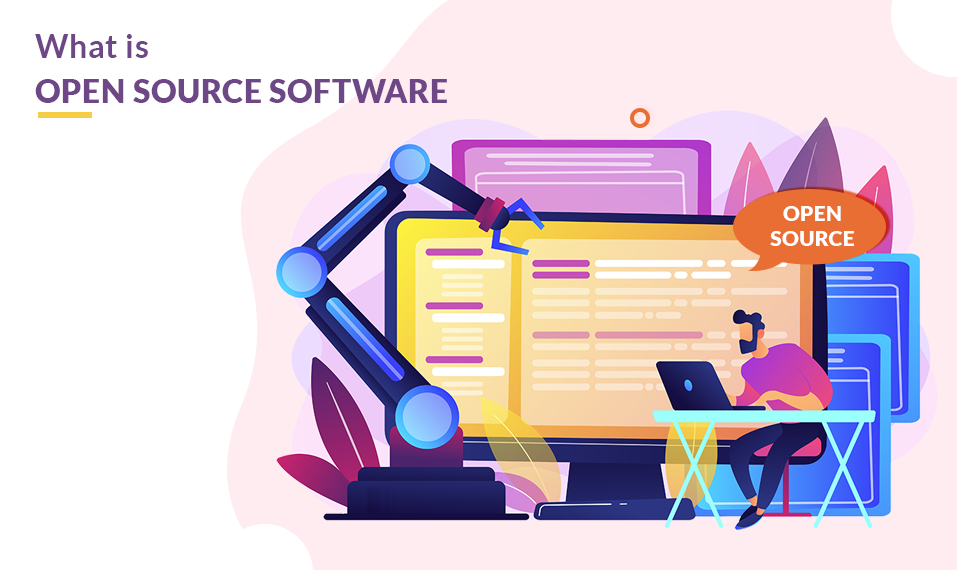Basically, open-source software is software that anyone can edit, modify, and redistribute. A great example of open-source software that you might have heard of is WordPress.
What is open-source software?
Open-source software is software that is distributed with its source code, is available for use, edit, and distributor under the license. Source code is a part of the software that most computer users don’t ever see.
The source code is released under a license by the developer of the software. This license is a basic set of guidelines on how you can access, modify, and redistribute the software. Programmers who have access to source code can change a program by adding to it, changing it, or fixing parts of it that aren’t working properly.
History of open source software
The idea of making OSS is developed by Richard Stallman in 1983. The concept is to provide freedom to study and modify the source code according to the project requirements. The aim is to understand it, learning it, and improves it. Stallman releases a free code under ‘GNU public license’.
In 1985, the non-profit Free Software Foundation (FSF) was formed to protect the ideology of the free software movement.
Later in 1997, Eric Raymond published ‘The Cathedral and the Bazaar’, which gave birth to the idea to rebrand the free software movement to highlight the business potential of sharing and collaborating on software source code.
Protect the ideology of the free software foundation formed in 1998- open-source initiative, a nonprofit organization, to promote and protect the OSS community. The open-source initiative act as a piece of central information and governing repository of open-source software.
How does open-source software works?
OSS usually comes with a distribution license. The license includes all the terms and conditions that define how a developer can use, add, modify, and most importantly distribute the software.
It is usually stored in a public repository and shared publically. Anyone can access the repository to use the code independently or contribute improvements to the design and functionality of the overall project.
According to the Black Duck Knowledge base, some of the most popular open-source software licenses used are as follows.
- MIT license
- GNU General Public License (GPL) 2.0
- Apache License 2.0
- GNU General Public License (GPL) 3.0
- BSD License 2.0
When source code is changed, open-source software must include what was altered as well as the method involved.
To avoid the misunderstanding and debate between free software and open-source, other terms such as FOSS (free and open-source software) and FLOSS (free, libre, and open-source software) can be used to describe the concept.
Example of open source software
- GNU/Linux
- Word Press
- Zakara
- VLC media player
Is open-source software is bug-free?
No, with multiple parties making modifications and improvements. So, there is a chance to bug occurs.
It is inventible that OSS will contain quality, performance, and security flaws. However, the broad base of code contributors can also mean that bugs are identified and fixed faster.
No matter the type of software—open-source or commercial—code flaws will exist. The main difference is who is responsible for fixing the bugs; for commercial software, vendors are responsible, whereas the consumer is responsible for open-source software. With a robust set of AppSec tools and practices in place, OSS can be easily secured.
Open-source software Advantage & Disadvantage
Advantage
- Open-source software is free.
- It is flexible; developers can examine how the code works and freely make changes to dysfunctional or problematic aspects of the application to better fit their unique needs.
- Open source is stable; the source code is publicly distributed, so users can depend on it for their long-term projects since they know that the code’s creators cannot simply discontinue the project or let it fall into disrepair.
- It comes with a built-in community that continuously update and modify.
- It provides a great learning opportunity for new developers.
Disadvantage
- Open source can be harder to use and adopt due to difficulty setting it up and the lack of friendly user interfaces.
- Open source can result in some unexpected costs while setting the software, training the users, and importing data.
- It has liability issues. Unlike commercial software, which is fully controlled by the vendor, open source rarely contains any warranty, liability, or infringement indemnity protection.
- It rarely provides any warranty, liability, or protection. The consumers are solely responsible for maintaining compliance with legal obligations.
Difference between open source software vs. close software (priority software)
Conclusion
In this article, we will discuss how open-source software works. It provides for flexibility and learning scope for a developer. The great thing is everyone is allowed to study source code, fix bugs, and redistributed the software.
For more articles –












Comments